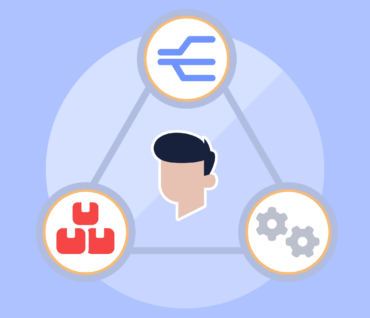Is your Supplier Information Management Creating a Bottleneck?
How to bring your supplier information management processes to the modern day.
One of the most essential tasks in procurement is supplier information management. Keeping supplier information accurate and up to date can feel near impossible, but with the right processes, this task can shift toward a more proactive approach.
With proactive strategies in place, you’ll save your team the time it takes to reactively track down supplier information and use that time to make even more significant business impacts.
Keep the business running
The first job of procurement is simply to keep the business running. When a business initiative requires the use of a supplier, it is procurement’s job to find and pay that supplier. The best thing to focus on in this stage is doing this quickly and effectively.
The best thing you can do with so few resources is create a solid foundation. Establish a process of gathering and storing supplier data that is scalable. Try to act with the future business in mind as much as possible while realizing some things won’t get priority, and that is just fine.
Create supplier information processes
To set your business up for success as it grows, give the suppliers you work with clear and actionable next steps so both sides know exactly what needs to happen to be onboarded and receive payment.
Teams with fewer resources could leverage spreadsheets or forms collected through email to centralize their supplier data-gathering process. It seems simple, but these steps will pave the path to success. Whatever format you choose, be sure to standardize the data you’re requesting from suppliers and be clear about your processes.
Implementing new processes is a difficult change for any team. Begin by finding the areas creating the most significant bottlenecks and shift those processes first. Then, ask questions and understand precisely how requests are made, where data is stored, how it is updated, and each sign-off or stop it has along the way.
Create logical, clear, and easy processes for those you work with to follow. The goal should always be to create the most straightforward, seamless process for your stakeholders to onboard and manage suppliers. When you gain the trust of the business, your job will become much more manageable. In the case of supplier information management, complication doesn’t always mean sophistication. Make sure to be clear and focus on what matters most.
Centralized supplier data
Create a centralized place to store your supplier data that is easy to update and visible to all necessary stakeholders. Often data is not stored in any central location but instead scattered across data centers and individual computers, creating redundant data, inefficient processes, unclear timelines, and many more issues.
Maybe your team is ahead of the curve and already uses a spreadsheet or form to manage and centralize your supplier data. But even this method will likely become unruly as you grow. When your program gets more sophisticated, your team will likely benefit from considering more robust systems such as ERP (Enterprise Resource Planning) or P2P (Procure-to-pay) tools.
Centralizing your supplier data takes time and strategy, but as long as your method is secure and scalable, it will be worth the work it takes to get there.
Automation
Once you’ve become proactive, the next ideal step is automation. Automating your way out of having to do many of the steps above will save your team time and money and make way for exponential growth.
Tools that will automatically score vendor risk, leverage performance data, and integrate with third-party data providers will help you take your team to the next level.
Automation will help your team eliminate risk, data inaccuracy, and fraud. With those factors automatically taken care of, not only will you sleep better at night, but you can also focus on more value-adding activities like driving innovation, negotiating better contracts, and cutting down on tail-spend.
Your team won’t just collect data. They’ll act on it.
What to do next?
If you’re looking for a solution to help you get your supplier information management processes on track– Graphite might be the first step you can take.
Graphite Connect allows procurement teams to implement a streamlined supplier information management process and centralized supplier data. It can also help you increase visibility, onboard new suppliers, and even keep track of key metrics.
Ready to Learn More?
Take your SIM knowledge to the next level by reading our full ebook on the topic.
Read the Ebook


